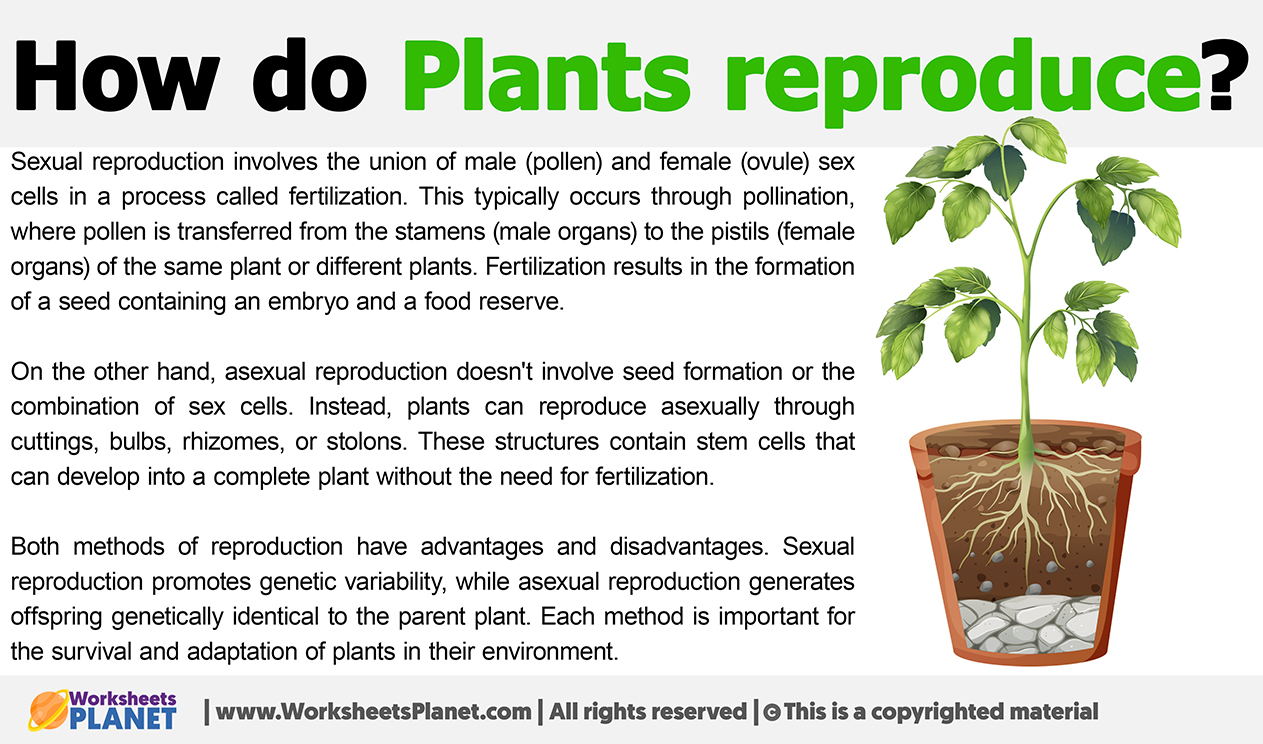Sexual reproduction involves the union of male (pollen) and female (ovule) sex cells in a process called fertilization. This typically occurs through pollination, where pollen is transferred from the stamens (male organs) to the pistils (female organs) of the same plant or different plants. Fertilization results in the formation of a seed containing an embryo and a food reserve.

On the other hand, asexual reproduction doesn’t involve seed formation or the combination of sex cells. Instead, plants can reproduce asexually through cuttings, bulbs, rhizomes, or stolons.
These structures contain stem cells that can develop into a complete plant without the need for fertilization.
Both methods of reproduction have advantages and disadvantages. Sexual reproduction promotes genetic variability, while asexual reproduction generates offspring genetically identical to the parent plant. Each method is important for the survival and adaptation of plants in their environment.

